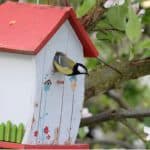Last updated on March 16th, 2022
Our site is reader supported, this means we may earn a small commission from Amazon and other affiliates when you buy through links on our site.
The Aloe Vera plant is a wonderful succulent to grow indoors. Not only is it good for air purification but the plant produces juice that can be used to alleviate burns and scrapes.
Aloe Vera is a succulent (as mentioned) and it is often short-stemmed or stemless producing instead thick, verdant leaves that fan from the central stem. Along the perimeter of each leaf are small serrated teeth. Before you invest in your Aloe plant you need to find a location in your home that provides bright but indirect sunlight. Be aware that this plant does not appreciate full exposure to sunlight all day, you will want to find somewhere in between so that you don’t dry the plant out. You can keep it in a pot near a kitchen window for most of the day as long as it doesn’t have the sun’s rays hitting it directly.
Do not ingest the gel
While the gel from the leaves can be applied topically, it should not be ingested by anyone in your home. It can cause nausea or indigestion and in large quantities can be toxic.
How to Grow Aloe Vera Plants
Choosing a pot
Before planting the Aloe Vera plant it is important that you find the right pot to keep it in. It’s recommended that you pick something porous like terracotta because this will allow the soil to dry out thoroughly between waterings and it will also be large enough to prevent your plant from tipping over. Given that Aloe Vera is a succulent this is particularly important and well worth doing to give it the best start.
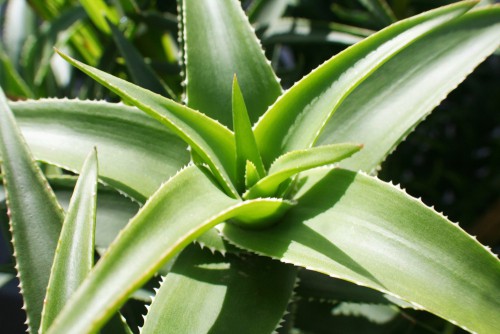
Select a container that has the appropriate drainage holes at the bottom. These go a long way towards preventing moisture buildup and root rot. If there are inadequate drainage holes you can always drill extra holes.
The pots you choose should be as wide as they are deep. If you already have an Aloe Vera plant with a stem you should select a pot that is deep enough so that the entire plant stem can be buried under the soil.
Choosing the right compost
The mixture you use should be a well-draining potting mix designed specifically for succulents or cacti. This should contain a mixture of course sand and perlite. Avoid using soil because this can cause them to rot. These are very strong plants and they will do well in most conditions but they cannot tolerate improper drainage.
Repotting your Aloe Vera
When it comes time to repot your plant because it has outgrown the container in which it was originally placed, the process is rather simple.
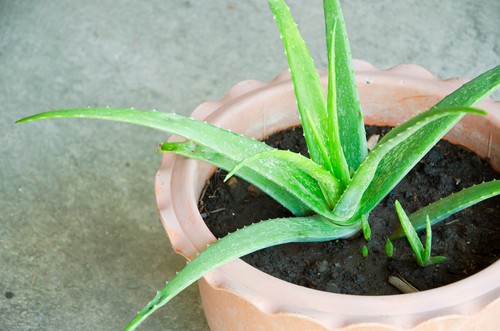
Step 1
Clean out any pot you plan to use (if it’s the one you’ve used before) and allow it to dry out properly.
Step 2
Remove the existing plant from its current pot and dust off any excess dirt from the roots. If the stem is too spindly and it won’t fit in the pot you can always trim it partially from the bottom but this is a very delicate procedure and it’s not recommended if it’s something that can be avoided.
Step 3
Fill the container about one-third of the way with cacti potting mix and place the Aloe plant inside, after which you can fill the remaining space.
Step 4
The compost should have some moisture content to it so we don’t recommend watering straight away, give it time to dry out before watering.
Caring for Aloe Vera Plants
Light and heat requirements
As previously mentioned, your Aloe Vera plant needs to be placed somewhere bright with indirect sunlight. It is ideal to place it on a windowsill that is exposed to bright indirect sunlight. Not enough sunlight and your plant will become leggy, which you want to try and avoid.
Aloe Vera plants thrive in temperatures between 13°C and 27°C. The interior temperature of most homes will do just fine, which is why they make such a great houseplant. You can place your Aloe outside between May and September although if the temperatures drop severely at night, bring them back inside. Most people usually keep them indoors permanently, however, they can make nice plants to have on balconies during the summer once the weather warms a little.
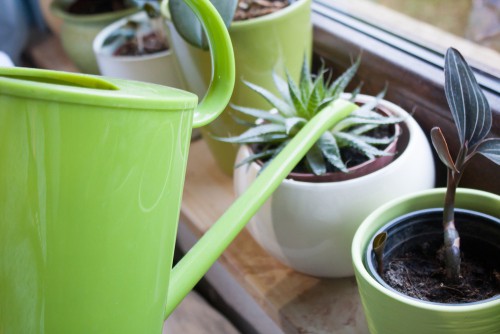
Watering and feeding
You should water your plants well but infrequently. They should be allowed to dry out thoroughly between each watering to prevent root rot, which is something they can be a little prone to. To give you a rough idea you can water once every 3 weeks, less during the winter and more frequently in summer. If you are going to add fertiliser do it sparingly and only in the spring or summer whilst it is actively growing. As they grow naturally in the desert where they get very little nutrients they can usually survive happily without an additional feed but it can help to keep them healthy.
Pests and Diseases
Aloe Vera plants are susceptible to the same indoor plant pests as other houseplants, for example, mealybugs. In terms of diseases, you need to be on the lookout for root rot, fungal stem rot and leaf rot. All of these can be avoided by watering appropriately, which means sparingly. Overwatering will lead you all of these diseases and if they are already present, overwatering will worsen them. If you notice any pests you can try spraying them with soapy water or a pesticide designed for houseplants.
Harvesting the Clear Gel from Aloe Vera Plants
If you want to harvest the clear gel, remove a mature leaf and cut it lengthwise. From there you can squeeze the gel out of the leaf and apply it as needed. Alternatively, you can cut the leaf lengthwise and open the leaf with the gel side facing downward, placing it directly on top of any infected wounds.
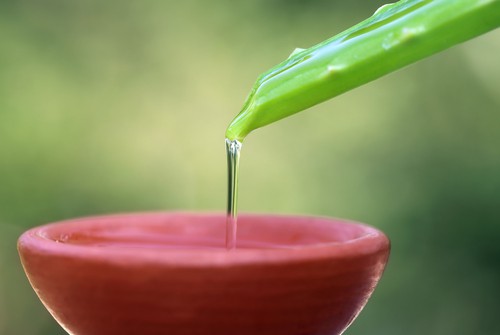
Due to its soothing, moisturising and cooling properties, we only recommend using it only as a topical medication to soothe sunburns, regular burns or cold sores. Never use your Aloe Vera to treat any severe cuts or burns.


